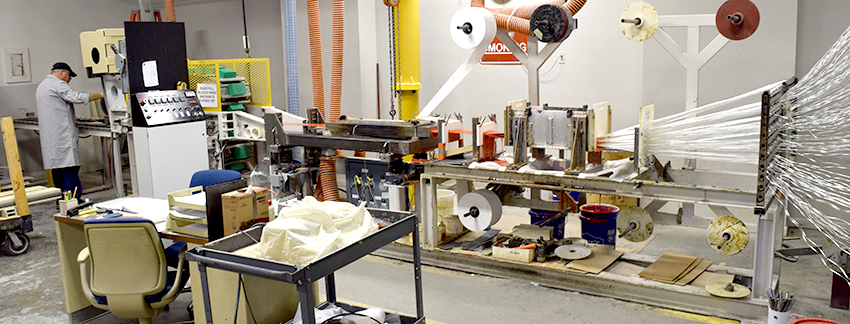How is Industrial Fiberglass Manufactured?
Industrial fiberglass is manufactured using several distinct mechanical techniques and methodologies, including filament winding, spray lay-up processes, and pultrusion manufacturing. Filament winding involves spinning reinforced glass fibers into cylindrical structures as small as bullet cases and as large as aircraft fuselages. Fiberglass spray lay-up fabrication uses pneumatic distribution of chopped filaments to create cost-effective structures that are mechanically stable, but typically require additional materials to improve the aesthetic qualities of the product.
Pultrusion is the preferred method of manufacturing industrial fiberglass composite materials that are suitable for the broadest range of applications. It enables continuous lengths of fiberglass mat to be drawn through a preformer and treated with high-strength bonding resins and reinforcing agents. An integrated heating die cures and shapes this matrix of raw materials, encouraging the hardening of the industrial fiberglass composite.

Rigid profiles corresponding to the distinct shape of the pultrusion die can be machined with high degrees of repeatability, and an excellent range of control over the geometric dimensions of the product. This article will explore the benefits of pultrusion manufacturing of industrial fiberglass in further detail:
The Benefits of Pultruding Industrial Fiberglass
Pultruding industrial fiberglass enables manufacturers to prepare unique structural shapes comprised of woven, stitched, or matted fiberglass with constant cross-sections that have been steeped in high-strength resins such as polyester, vinyl ester, epoxy, urethane, or phenolic. These bespoke composites offer standard improvements over alternative materials, with application-specific benefits from more specialized materials.
Pultruded industrial fiberglass is lightweight and highly stable, providing vastly improved strength to weight ratios over established industry materials such as wood, steel, and concrete. These mechanical properties are associated with significantly low degrees of thermal and electrical conductivity, enabling the lower cost construction of outstanding performance insulators.
The mechanical benefits of industrial fiberglass over alternative materials is well-documented, but there are also significant cost advantages to using pultrusion methods for manufacturing structural materials. Pultrusion is a low-cost fabrication method that has concurrent ramifications to costs throughout the supply chain and eventual product installation. The lightweight nature of the material makes it easier to transport and machine on-site, enabling safer and less-mechanically invasive application of the material, which is critical for high-throughput facilities or crucial infrastructural projects.
Pultrusion with Strongwell
Strongwell leads the industry in terms of pultrusion experience and capacity, with an outstanding team of industry experts and over 65 distinct pultrusion machines for manufacturing a broad selection of industrial fiberglass products. We can provide custom pultrusion matrices for distinct applications and ready-to-order structural shapes for a broad range of applications. We also supply the PULSTAR® pultrusion machine for facilities looking to develop their own industrial fiberglass pultrusion line.
If you would like any more information about pultruding industrial fiberglass, please do not hesitate to contact us.